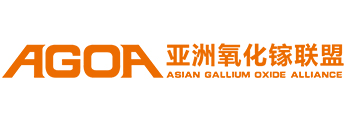

【Member Papers】Study on the construction of β-Ga₂O₃/SiC high quality heterogeneous interface and current transport mechanism of Schottky Diode by research team of SIMIT
日期:2024-05-31阅读:682
1、Work Introduction
Recently, the heterogeneous integration XOI research group of Shanghai Institute of Microsystems, Chinese Academy of Sciences has made progress in the preparation of heterogeneous integration Gallium Oxide materials and the heterogeneous integration analysis. Based on the "universal ion knife" stripping and the improved hydrophilic bonding process, the amorphous layer of 1.2nm heterogeneous interface was constructed. Due to the injection of H ions, a deep donor level of E3 GaO inverse defect is produced in the Gallium Oxide films, and the current transport mechanism of β-Ga2O3/SiC Schottky Diodes under high voltage reverse bias is changed to Poole-Frenkle emission. The relevant research results are presented in the "Current transport mechanism of lateral Schottky barrier diodes on β-Ga2O3/SiC structure with atomic level interface "is published in the journal Applied Physics Letters. The co-first authors of the paper are Xu Wenhui, postdoctoral fellow, and Shen Zhenghao, doctoral student, respectively. The corresponding authors of the paper are You Tiangui and Ou Xin, researchers at the Shanghai Institute of Microsystems.
2、Research Background
Intelligent stripping by “universal ion knife” is a key technology to solve the bottleneck of Gallium Oxide heat dissipation. Gallium Oxide heterogeneous integration materials prepared based on this technology have been widely used in the preparation of high-performance Gallium Oxide power and RF devices. However, the interface amorphous layer caused by the bonding process will hinder the improvement of the material's heat dissipation capacity, and the interface defect will cause the device performance to deteriorate. More importantly, the types of defect induced by H ion implantation in β-Ga2O3 films during the material preparation process and the mechanism of their effects on carrier and device properties are still unclear without considering the restoration of crystal lattice quality after annealing at high temperature, which limits the improvement of Gallium Oxide heterogeneous integrated material quality and device performance. In this work, improved hydrophilic bonding technology was used to effectively reduce the thickness of amorphous layer at the interface and improve the interface quality. Based on variable temperature C-V, I-V and DLTS, the effect of H ion implantation on the current mechanism of β-Ga2O3/SiC heterogeneous SBDs devices was further studied. This provides theoretical guidance and technical support for further improving the power and performance of β-Ga2O3/SiC RF devices.
3、Research Highlights
The heterogeneous integration XOI group of Shanghai Institute of Microsystems prepared high-quality heterogeneous interface β-Ga2O3/SiC materials with the intelligent stripping and transfer technology of "universal ion knife". The thickness of the amorphous layer at the interface was only 1.2nm. After mechanical and chemical polishing, the surface roughness of the film reached 0.229 nm. This will provide a reliable β-Ga2O3 heterogeneous integration material for subsequent high-performance device fabrication.

Figure 1. (a) X-ray diffraction pattern of β- Ga2O3/SiC; (b) high-resolution transmission electron microscopy of high quality β-Ga2O3/SiC heterointerface; (c) Surface morphology of β-Ga2O3 thin film after CMP polishing.
Through the C-V characteristics testing of GaOSiC SBD devices, it is found that, as shown in FIG. 2(a), H ion implantation has obvious effect on the passivation of carriers in β-Ga2O3 film, and the carrier concentration of β-Ga2O3 film after stripping and transferring is 8.8×1016 cm-3 at room temperature, which is only 8% of the carrier concentration of β-Ga2O3 body wafer before H ion implantation. Further through the temperature-varying reverse bias I-V test, it is found that the current transport is related to the reverse bias voltage. At a lower electric field (Vbais<3 V), the current follows the transport mechanism of thermal emission model; Whereas unsaturated currents at high electric fields indicate a lower barrier for electrons during transport, as shown in Figure 2(b).

FIG. 2 (a) Characterization of C-V characteristics of GaOSiC SBD in the temperature range of 300-390 K; (b) thermal emission model fitting under the inverse bias of GaOSiC SBD.
The trend of reverse bias current and voltage of GaOSiC SBD is different from that of bulk material SBD, which can be inferred to be caused by defect caused by H ion implantation. Therefore, the Poole-Frenkel emission model based on the electric field enhanced thermal emission of trapped carriers is applied in this study. As shown in FIG. 3 (a), this model well fits the trend of reverse bias current and voltage change of GaOSiC SBD in high field. At high fields, due to the lower trap barrier, the field-assisted hot electron emission in the donor center increases the free electrons in the β-Ga2O3 conduction band, resulting in an increase in leakage current, the transport mechanism of which is shown in Figure 3 (b). It has been shown that high energy proton irradiation can greatly increase the deep level GaO inverse defect concentration of E3, resulting in the decrease of β-Ga2O3 carrier concentration. By fitting the Poole-Frenkel emission model, the position of the defect level is 1.03eV lower than the conduction band, which is consistent with the defect level of the deep donor of the β-Ga2O3E3. Therefore, it can be concluded that the injection of H ions will lead to a large number of deep donor traps in β-Ga2O3, further passivating the thin film carrier concentration and changing the transport mechanism of the device at high fields. In order to further verify the accuracy of the location and concentration of defect in the GaOSiC SBD, the main types of defect in the GaoSIC SBD were extracted by DLTS testing in this study, and the results were consistent with those obtained by fitting Poole-Frenkel emission model.

FIG. 3 (a) The fitting of the reverse temperature changing J-V curve of GaOSiC SBD under high field by PF emission model; (b) Schematic diagram of TE and PF emission in the GaOSiC SBD band map; (c) The energy levels of GaOSiC SBD defect are linearly fitted by PF emission model. (d) Using DLTS to test linear fitting GaOSiC SBD defect levels.
4、Summary and Prospect
"Universal ion knife" intelligent stripping heterogeneous integration is the key technology to solve the heat dissipation bottleneck of Gallium Oxide devices. In this study, high quality heterogeneous interfaces were constructed by improved hydrophilic bonding techniques, and the types of defect induced by H ion implantation in Gallium Oxide films and their effects on the reverse bias current transport mechanism were described. This work will provide important references for the optimization and design of Gallium Oxide heterogeneous integration materials and devices, and further promote the development of high-performance Gallium Oxide power and RF devices.


